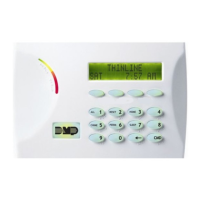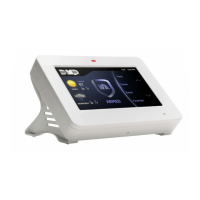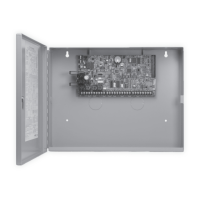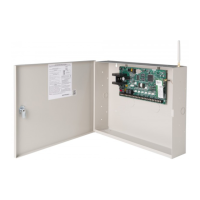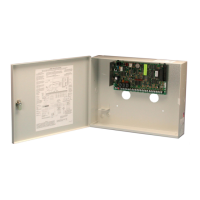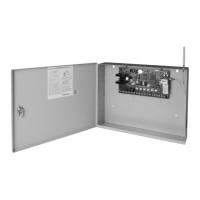
Do you have a question about the DMP Electronics XR500 and is the answer not in the manual?
| Brand | DMP Electronics |
|---|---|
| Model | XR500 |
| Category | Security System |
| Language | English |
Describes the system's design for safety and comfort using advanced technology.
Discusses the industry concern of false alarms and how the guide helps reduce them.
Recommends weekly testing of the burglary portion of the system for proper function.
Instructions on creating a floor plan detailing walls, windows, doors, stairs, and obstacles.
Determining at least two safe escape routes from each room in a building.
Prearranging a meeting place outside the building for occupants after evacuation.
Emphasizing the importance of practicing escape routes for plan effectiveness.
Details the components and layout of the Thinline/Aqualite keypad.
Describes the Clear Touch keypad, its display, and touch-sensitive areas.
Illustrates the Thinline Wireless Keypad and its components.
Describes the four Select keys under the display for making selections.
Explains the four touch-sensitive Select Areas on Clear Touch keypads.
Details the LED operation for Power and Armed status on Thinline/Aqualite keypads.
Explains the LED color and activity indicating panel status on Clear Touch keypads.
Describes how the backlit logo indicates panel armed and keypad power status.
Pressing and holding adjacent Select keys to activate panic functions.
Touching specific icons for 2 seconds to activate panic functions.
Keys used for entering codes, numbers, and other system information.
Key used to advance through displays, menus, or complete entries.
Key used to navigate back through displays or erase characters.
How to select and use multiple languages for the User Menu and Status Display.
Understanding how options are displayed and changed on the keypad.
Explains how lists are displayed across multiple screens on XR500 systems.
How asterisks indicate selected programming options or armed areas.
How system names are displayed and scroll on the 32-character display.
Adjusting the keypad's backlighting level for optimal visibility.
Setting the tone pitch for the keypad's internal speaker.
Adjusting the volume level for the keypad's internal speaker.
Details about keypad model number, serial number, and address.
Illustrates key fob button layouts and names for different models.
Indicates low battery, missing signals, trouble, or jamming for wireless transmitters.
Explains meanings of various keypad messages like ALARM, TRBL, and code entry prompts.
Entry/Exit doors used to restrict access or provide access to authorized users.
Burglary zones grouped together that can be armed or disarmed collectively.
Turning the burglary protection on or off for system areas.
How the system automatically sends reports to a central station for dispatch.
Indicates system problems and displays current armed/disarmed status.
Explains different types of zones like instant, 24-hour, and entry/exit.
Displays any alarm or trouble condition on a zone or system monitor.
Keypad display of the current armed condition of areas within the security system.
Allows viewing disarmed zones that are in fault.
Describes different arming configurations: Area, All/Perimeter, Home/Sleep/Away, and Guest.
Explains how to arm and disarm areas individually or all at once.
Process of bypassing faulted zones to allow arming when corrections aren't immediate.
Detailed steps to arm an area system, including user code entry and area selection.
Disarming all or selected areas of the system.
Disarming areas by presenting a card to a reader.
Explains arming Perimeter only or both Perimeter and Interior areas.
Cancels exit/entry delays to make zones instant during arming.
Covers disarming steps, schedules, alarm displays, disarmed messages, and reports.
Explains arming options (HOME, SLEEP, AWAY) for these system types.
Displays indicating system readiness for arming or faulted zones.
Shortcut keys for arming Home, Sleep, and Away modes.
Covers disarming steps, schedules, alarm displays, disarmed messages, and reports.
Shortcut keys for arming different system configurations (Home/Sleep/Away, All/Perimeter).
Using shortcut keys to arm Home/Sleep/Away, Guest, or All/Perimeter systems.
Using shortcut key 2 to reset detectors that latched due to an alarm.
Using shortcut key 5 to initiate Zone Monitor operation.
Steps to access the User Menu, including language selection and code entry.
List and description of all available User Menu options.
Steps to use the Door Access function via user code or card reader.
Steps to view the list of armed area names.
Step-by-step guide to turn system outputs or door relays ON or OFF.
Steps to check zone status by category or individual zone number.
Steps to bypass or reset a zone before arming the system.
Steps to add/remove zones or specific zones for monitoring.
Steps to view the status of system monitors like AC power, battery, and tamper.
Step-by-step guide to perform the system test sequence.
Details on profile number, name, area assignments for arming, disarming, and access.
Covers adding, user numbers, codes, PINs, names, and profiles for user management.
Sounds keypad buzzer and displays messages to remind users to arm or extend schedule.
Assigning a schedule to a specific area number.
Selecting OUT or DOOR for programming schedules.
Selecting HOL to program specific holiday schedules.
Entering month and day for the first holiday schedule (A, B, or C).
Steps to adjust the system's date and time settings.
Steps to initiate a fire drill test.
Procedures for ending a fire drill test.
Introduces the Display Events items and how to navigate them.
Steps to view, sort, and print system event logs.
Displays system area arming or disarming events, including user and time.
Displays alarms, troubles, and other events occurring on protection zones.
Displays supervisory events and user code changes.
Displays events related to zone bypass actions.
Displays changes made to system schedules.
Displays wireless jamming and trouble events.
Flowchart for using the browser to check zone status.
Detailed guide on how to enter custom names using the keypad.
Covers door strike, arming/disarming, entry delay, and access reader functions.
Explains how the system sends reports to email or cell phone numbers.
Text commands for arming specific areas or system types.
Text command to arm all areas of the system.
Text command to disarm all areas of the system.
Text commands to disarm specific areas of an Area system.

